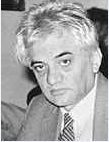Review Article
Review On Phytoestrogens: Their Beneficial and Adverse Effects in Animal Systems
- Sharanabasappa A. Patil *
Reproductive Endocrinology Laboratory, Department of Zoology, Gulbarga University, Kalaburagi, Karnataka, India.
*Corresponding Author: Sharanabasappa A. Patil,Reproductive Endocrinology Laboratory, Department of Zoology, Gulbarga University, Kalaburagi, Karnataka, India.
Citation: Sharanabasappa A. Patil. (2025). Review On Phytoestrogens: Their Beneficial and Adverse Effects in Animal Systems. Journal of Surgical Case Reports and Reviews. Biores Scientia Publishers. 4(1):1-9. DOI: 10.59657/2993-1126.brs.25.0027
Copyright: © 2025 Sharanabasappa A. Patil, this is an open-access article distributed under the terms of the Creative Commons Attribution License, which permits unrestricted use, distribution, and reproduction in any medium, provided the original author and source are credited.
Received: February 28, 2025 | Accepted: April 15, 2025 | Published: April 19, 2025
Abstract
Phytoestrogens are plant derived compounds that structurally or functionally mimic mammalian estrogens and therefore are considered to play an important role in the prevention of cancers, heart disease, menopausal symptoms and osteoporosis. People are seeking complementary and alternative practices of health care as well as treatments seen as more ‘natural’ as a way to competent biomedical health care. The compounds are weaker than natural estrogens and reside in herbs and seasonings (garlic, parsley), grains (soybeans, wheat, rice), vegetables (beans, carrots, potatoes, bitter melon), fruits (date, omegranates, berries, apples) and drink (coffee). Most of us are exposed to many of these natural compounds through food (fruits, vegetables, meat). The three most studied groups of phytoestrogens are the lignans (grains, fibers, flax seeds, fruits and vegetables), isoflavones (found in soybeans and legumes) and the phenolics (found in bitter melon). Because scientists have found phytoestrogens in human urine and blood samples, we know that these compounds can be absorbed into our bodies. In fact, phytoestrogens can have one of several fates after being eaten, they can be excreted or they can be absorbed into our bodies or they can be broken down into other compounds that can also be potent phytoestrogens. Whatever their destiny, phytoestrogens differ remarkably from synthetic environmental estrogens in that they are easily broken down, are not stored in tissue and spend very little time in the body. On the other hand, the mechanisms and potencies of phytoestrogens are not completely clarified and they may be considered potential endocrine disruptors, and therefore caution should be exercised while taking them. Eating very high levels of some phytoestrogens may pose some health risks. Reproductive problems have been documented in laboratory animals, farm animals and wildlife that ate very high (up to 100% of their diet) amounts of phytoestrogen-rich plants. Sheep consuming large amounts of clover showed infertility and reproductive disorders. Cheetahs in captivity also had reduced fertility rates when consuming a feline diet composed of a soybean product, which was reversed when it was removed from the diet. Toxicities associated with herbal medicines that include phytoestrogens have also been reported in the literature.
Keywords: phytoestrogen; dietary phytoestrogen; estrogen; endocrine disruptors
Introduction
Historically, many plants with potential estrogenic activity have been widely used in the treatment of ailments peculiar to women in folk medicine. Pomegranate is associated with fertility (Price and Fenwick, 1985), whereas hops were used by German clergy in the Middle Ages to lower fertility. Phytoestrogens, a term coined to describe plant derived chemicals that exert estrogenic activity, include a vast variety of structurally diverse compounds. The concept of phytoestrogens came to the fore when Allen Doisy published bioassay for estrogen (Allen and Doisy, 1923). Phytoestrogens gained importance in the 1940s due to infertility in sheep grazing on pastures rich in clover in Western Australia, later known as `clover disease' (Bennetts et al., 1946). By 1975, hundreds of plants were reported to have estrogenic activity. Based on epidemiological studies, Adlercreutz (2002) suggested that the reason for the reduced risk of diseases, such as breast and prostate cancer and cardiovascular diseases in Asiatic and Mediterranean nations compared to Western countries could be attributed to their diet rich in phytoestrogens.
Plant compounds can be limited to specific botanical families that may assist researchers in identifying other species that contain the same compounds. The plant sources tested for their estrogenic effects and potential health benefits. The higher concentrations of phytoestrogens in legume plants even though they are also found in grains, vegetables and fruits distributed across the plant kingdom. The most common phytoestrogens found in legumes are isoflavones. Isoflavones are part of isoflavonoids, which are almost exclusively limited in distribution to the Fabaceae family and more specifically to the sub family Papilionaceae (Dewick, 1993). A few isolated cases of isoflavonoid derivatives have been reported in other plant families in the dicotyledons. Of the monocotyledons, species of Iris (Iridaceae) are a major source of isoflavonoids. Cucurbitales contains Cucurbitaceae (pumpkin and Momordica), Rosales contains Cannabaceae (hopes) Fabales contains Fabaceae (soy, licorice, red clover), and Malpighiales (flax). The other botanical sources are ginseng (Panax spp. and Eleutherococcus senticosus., Araliaceae), Coffee (Coffea Arabica L., Rubiaceae)
Recent research may help to identify potential health benefits and shed some light on how plant compounds protect against certain diseases. Interest in the physiological role of bioactive compounds present in plants has increased dramatically over the last decade. Of particular interest in relation to human health is the class of compounds known as the phytoestrogens. Data from animal and in vitro studies provide possible mechanisms to explain how phytoestrogens may influence hormone dependent states, but although the clinical application of diets rich in these oestrogen mimics is in its infancy. Data from preliminary studies suggest potential beneficial effects of importance to health. Whether phytoestrogens have any biological activity in humans, either hormonal or non-hormonal is a contentious issue and there is currently a paucity of data on human exposure. Much of the available data on the absorption and metabolism of dietary phytoestrogens is of a qualitative nature; it is known that dietary phytoestrogens are metabolized by intestinal bacteria, absorbed, conjugated in the liver, circulated in plasma and excreted in urine.
The limited studies conducted so far in humans clearly confirm that Soya isoflavones can exert hormonal effects. These effects may be of benefit in the prevention of many of the common diseases observed in Western populations (such as breast cancer, prostate cancer, menopausal symptoms, and osteoporosis) where the diet is typically devoid of these biologically active naturally occurring compounds. However, since biological effects are dependent on many factors including dose, duration of use, protein binding affinity, individual metabolism and intrinsic oestrogenic state, further studies are necessary to determine the potential health effects of these compounds in specific population groups. However, we currently know little about age related differences in exposure to these compounds and there are few guidelines on optimal dose for specific health outcomes.
All in all, there are differing opinions about phytoestrogens role in health. When consumed as part of an ordinary diet, phytoestrogens are probably safe and may even be beneficial. Estrogens influence the growth and functioning of female and male reproductive tissues, maintain the skeletal and central nervous system and provide cardioprotective effects in the cardiovascular system. In fact, some studies on cancer incidences in different countries suggest that phytoestrogens may help to protect against certain cancers (breast, uterus and prostate) in humans. Many women turn to phytoestrogens as an alternative to hormone replacement therapy (HRT) and estrogen replacement therapy (ERT) because of their undesirable side effects, such as increased risk of breast and endometrial cancer and irregular bleeding. Considering the numerous effects of estrogens have on the human body, it is not surprising to consider the potential of phytoestrogens for human health.
As potential endocrine disruptors, phytoestrogens may act as antiestrogens and harm reproductive health of males. Reduced sperm quality, undescended testis and urogenital tract abnormalities were increased in the sons of mothers taking diethylstilbestrol. Animal studies conducted with diethylstilbestrol resulted in male genital abnormalities during development, including cysts, testicular lesions and lack of growth of the seminal vesicles and therefore concern has been raised about the effects of phytoestrogens on male development.
Even though humans almost never eat an exclusive diet of phytoestrogen-rich foods (even vegetarians), those who consume uncooked soy or pop phytoestrogen pills as a natural therapy may be exposing themselves to some health risks. Many natural compounds, especially hormones, can be potent and can have both good and bad health effects, depending on how much it is in the body. These substances should always be used in moderation to avoid any unintentional health consequences. In the present status in world the regulation and awareness are required on standardization, preparation and extraction methods of phytoestrogen products being sold and marketed as nutritional supplements. As nutritional and herbal supplements these products are not supported by preclinical/clinical trials and therefore should be administered and must be taken into consideration.
Possible health benefits of Phytoestrogens
Menopausal symptoms
OESTROGEN replacement therapy (ERT) hit the mainstream in January, 1964 when Newsweek published an article entitled “No More Menopause,” based on the work of New York gynaecologist Robert A Wilson. There goes a debate as to when HRT should be started. Most begin HRT during the premenopausal period, since new evidence indicates that loss of bone mass may begin well before menses end. Although HRT is widely recommended for use by postmenopausal women, it still remains quite controversial. Its long-term safety and efficacy remain matters of great concern. Scientists noted a relationship between the long-term use of HRT and the increased risk of breast and uterine cancer. Many women who start on HRT ended up going off it a few months or a few years later because of the side effects.
Oestrogen is known to stimulate the endometrium. This growth may continue uncontrollably, resulting in cancer. It is generally administered in small doses to minimize this complication. Generally, for women who have a uterus, a synthetic form of progesterone called progestin is added to oestrogen to counteract oestrogen’s dangerous effect on the uterus. Currently, hormone replacement therapy is the primary treatment for the symptoms and long-term risks associated with menopause. However, recent evidence calls into question the protective effect of oestrogen on cardiovascular disease risk. The association of risk for breast cancer with oestrogen replacement therapy also has not been fully clarified. Hence, long-term HRT is not recommended for women at low risk for coronary artery disease or at high risk for breast cancer. In addition, many women cannot or choose not to take hormones. The growing number of choices and questions in this area emphasizes the need to individualize a treatment plan for each woman to meet her specific needs. Reduction of oestrogen production in middle-aged women is associated with symptoms of menopause, such as hot flashes, vaginal dryness and atrophic vaginitis. These symptoms were thought to occur universally.
Phytoestrogens are beneficial to relieve a variety of symptoms of menopause and helps prevent bone resorption. Phytoestrogens are plant chemicals, which structurally resemble endogenous oestrogens and physiologically function as oestrogen agonist and antagonist. The two important phytoestrogens are lignans and isoflavones. The two lignans namely enterolactone and enterodiol are the products of microbial metabolism of secoisolariciresinol and matairesinol, which are found in whole grains, fibers and flax seeds, several vegetables and fruits. Enterodiol may be further oxidized to enterolactone. Isoflavones, which are abundant in legumes, exist as sugar derivatives called glycosides. These compounds undergo hydrolysis in human gut yielding aglycones. The most common isoflavones are formononetin, daidzein, genistein and biochanin A. Biochanin A is metabolized to genistein. Formononetin may be metabolized to daidzein which is further metabolized to equal, the more potent phytoestrogen.
Women in some countries, such as Japan, appear to experience symptoms less frequently than women in the Western countries, despite the fact that far fewer use hormone replacement therapy postmenopausal. For a study involving 145 postmenopausal women who were randomized to receive either a diet rich in phytoestrogen daily or a control for 12 weeks, menopausal symptom scores, hot flashes and vaginal dryness were found to be decreased by 50, 54 and 60 per cent respectively in women on phytoestrogen-rich diet.
Phytoestrogens, therefore, offer an effective option for the treatment of menopausal symptoms like vasomotor instability and atrophic vaginitis, as well as the long-term health risks such as cardiovascular disease and osteoporosis that are associated with menopause. Phytoestrogen-containing herbs offer significant advantages over the use of oestrogens in the treatment of menopausal symptoms. A high intake of phytoestrogens is also thought to explain why hot flashes and other menopausal symptoms rarely occur in cultures consuming a predominantly plant-based diet. While both synthetic and natural oestrogens may pose significant health risks, phytoestrogens have not been associated with these side effects. Phytoestrogens in herbs exert oestrogenic effects, and have a balancing action on oestrogen effects.
Phytoestrogens have dual mechanism of action: If oestrogen levels are low, since phytoestrogens have oestrogenic activity, they will cause an increase in oestrogen effect. If oestrogen levels are high, since phytoestrogens bind to oestrogen-receptor binding sites, thereby competing with oestrogen, they cause a decrease in oestrogen effects. The Himalayan drug company lunches a new product viz. Menosan – for management of menopausal symptoms. Menosan is being an ideal alternative to hormone replacement therapy (HRT) without the associated risks and adverse effects. Menosan is a unique herbal formulation that contains phytoestrogens with benefits in managing the short- and long-term symptoms. Menosan contains ingradiets such as Ashoka, Shatavari, Yashti-madhu, etc. which contains phytoestrogens that have significant advantages over synthetic estrogens.
Some botanicals used for menopausal syndromes are black cohosh, doing quai, ginseng, red clover, hops (Humulus lupulus L., Cannabaceae), oil of evening of primrose (Oenothera biennis L., Onagraceae) and chaste berry or chaste tree berry (Vitex agnus-castus L., Verbenaceae) (Liu et al., 2001b; Kronenberg and Fugh-Berman, 2002). Several reviews have discussed studies conducted on phytoestrogens and menopausal symptoms and still much contradictory evidence exists as to the benefits of phytoestrogens (Glazier and Bowman, 2001; Merritt, 2001). More research is needed in this area, especially studies examining the long-term effects of phytoestrogens on endometrial tissue and bone loss.
Osteoporosis
The evidence supports ERT in the prevention of osteoporosis in postmenopausal women and therefore phytoestrogens have been evaluated for their effects on bone mineral density. Researchers hypothesize that a diet rich in isoflavones has a protective effect on bone (Tham et al., 1998). Vincent and Fitzpatrick (2000) reviewed three animal studies and concluded that genistein has a biphasic effect, lower doses improved bone mineral as opposed to high doses, on bone mineral density in overiectomised rats. Vander shouw and coworkers (2000) reviewed three studies in bone mineral density with phytoestrogen consumption that was conducted with postmenopausal women. In addition, soy foods are considered a good source of calcium. Estrogen receptors have been found in osteoblasts, which may cause alteration in some protein production. The phytoestrogen-ER complex may bind to EREs and inhibit or suppress specific gene [removed]Anderson et al., 1999). More long-term studies are needed on bone density and fracture rates to determine safety, efficacy and appropriate dosages.
The Himalayan drug company lunched new product Reosto – a drug to combat osteoporosis, under its medicinal range of products. Highlighting the benefits offered by Reosto being a natural source of calcium, eliminates the risk of abnormally high calcium and vitamin D in blood, thereby helps preventing formation of calcium stones in the urinary tract. It helps to slow bone loss and reduce the incidence of fractures. The presence of phytoestrogens helps in modulating the synthesis and utilization of various hormones to restore the hormonal balance without any side effects.
Cancer
Phytoestrogens have been investigated as possible cancer preventatives. Laboratory animal experiments and comparisons of Asian and Western human populations suggest that diet has a large role in these types of health problems. One study found that Asian populations that eat large amounts of soy products - which contain high levels of phytoestrogens - have lower rates of hormone-dependent cancers (breast, endometrial) and a lower incidence of menopausal symptoms and osteoporsis than do Westerners, who don't traditionally eat these products. Asian immigrants to Western nations also increase their risks of these maladies as they Westernize their diets to include more protein and fat and reduce their fiber and soy (Barrett, 1996).
Even short-term exposure to phytoestrogens may offer some long-term protection against some cancers, including breast, colon, prostate, liver and leukemia. According to some animal studies, phytoestrogens (mostly the soy-based compounds) eaten as part of an adult diet can protect against some types of cancer and may even inhibit tumor growth. Another animal study found that newborn rats injected with genistein (an isoflavone found in soy products) and then exposed to a cancer-causing agent later in life developed fewer tumors and waited longer to develop them than the non-exposed rats (Barrett, 1996).
Gaining these possible benefits may involve more than just eating more soy products. Asians, for instance, have been eating these compounds for thousands of years and may have evolutionary adaptations that allow them to use phytoestrogens to their advantage. And, some plants and soy products contain other potential anti-cancer substances (such as protease inhibitors and antioxidants) that may also be responsible for some of the health benefits (Makela et al., 1995).
For instance, the very foods that may interfere with the endocrine messaging centers during a baby's development may help to protect against breast and prostate cancer in adults. Why? There is strong evidence that a high lifetime exposure to natural estrogens, such as estradiol, increases the risk of certain kinds of cancer, such as uterine cancer. Phytoestrogens may help reduce that risk because they may lower a person's lifetime exposure to natural estrogens by competing for estrogen receptor sites or changing the way natural estrogens are broken down. These endocrine interferences can reduce a person's exposure to natural estrogens thus reducing the cancer risk to steroid hormone target tissues (mostly reproductive organs).
In vitro studies show that phytoestrogens can inhibit a wide range of both hormone-dependent and hormone-independent cancer cells. Human estrogen receptors (ER) are of two types: ER-alpha and ER-beta. Like estrogens, phytoestrogens also bind to both ER-alpha and ER-beta (but more strongly to ER-beta). Phytoestrogens can mimic and antagonize the effects of endogenous estrogens. The recent discovery of ER-beta in osteoblast cells may explain the protective role of phytoestrogens in bone loss. It is well recognized that estrogens can down- or up-regulate the activity of osteoclasts, thereby limiting bone resorption. However, the exact mechanism of action is not clear. Phytoestrogens have a conservatory effect on calcium excretion.
Epidemiological studies also support the role of phytoestrogens in reducing the risk of prostate cancer. Tumour development in animals implanted with prostate cancer cells was significantly reduced by feeding a phytoestrogen rich-diet. Several epidemiological studies suggest the benefitial use of phytoestrogens in reducing prostate cancer (Severson et al., 1989; Jacobsen et al., 1998; Strom et al., 1999). A human study of 83 cases and 107 controls used a dietary questionnaire to evaluate phytoestrogen consumption for prostate cancer risk (Strom et al., 1999). The results showed slightly protective effects on prostate cancer risk with greater consumption of phytoestrogens. Severson and coworkers (1989) showed that increased tofu consumption was associated with a decreased risk of prostate cancer in men of Japanese ancestry living in Hawaii. Another study reported that Adventist men who consumed soy milk daily were at lower risk for prostate cancer (Jacobsen et al., 1998). An herbal mixture including licorice and ginseng as well as six other herbs has shown estrogenic activity and was effective in two of hormone- refractory prostate cancer (De la Taille et al., 2000). Other studies have evaluated alternative therapies, such as soy, black cohosh, vitamin E and red clover for their potential use in alleviating hot flashes for prostate cancer patients (Moyad, 2002).
There is a paucity of research on the effects of phytoestrogens and prostate cancer. Although the present studies show a positive association between phytoestrogens and prostate cancer risk, more animal studies are needed to confirm this hypothesis.
Cardiovascular disorders
The leading cause of death in women in industrialized nations is coronary heart disease (CHD). In menopause the risk of CHD greatly increases and it is proposed that this is due to loss of estrogen (Wroblewski Lissin and Cooke, 2000). Lipid profiles, vascular reactivity, cellular proliferation and thrombosis are factors that affect CHD and on which oestrogens have shown beneficial effects (Anderson et al., 1999). Several mechanisms of action reported to explain the hypocholesterolemic effects of phytoestrogens includes increased bile acid secretion, which aids removal of low-density lipoprotein (LDL); affected hepatic metabolism coupled with increased removal of LDL by hepatocytes; and enhanced thyroid function (Wroblewski Lissin and Cooke, 2000). Studies suggest that isoflavones as antioxidants may affect atherogenesis by reducing the oxidation of LDL (Ruiz-Larrea et al., 1997; Wagner et al., 1997). Hwang and coworkers (2001) reported that extracts of soy, alfalfa and acerola cherry (Malpighia glabra L., Malpighiaceae) may synergistically interact to prevent LDL oxidation. Limited research has been conducted with phytoestrogens to evaluate the effects on cardiovascular disease.
The high intake of phytoestrogens is associated with a favorable metabolic cardiovascular risk profile. Current evidence suggests that phytoestrogens have significant potential in reducing CAD via favorable effects on the lipid profile. Epidemiological data suggests that phytoestrogen consumption contributes to the lower incidence of cardiovascular disease in Asian countries and in vegetarians, and phytoestrogens may be cardio protective.
Anti‐aging effect
The skin is the largest organ in the body. Like all other tissues, it undergoes degenerative processes with aging. Skin helps in body protection and temperature regulation and acts as an organ of sensation (Nagula & Wairkar, 2019). Skin aging includes a loss of elasticity, a reduction in epidermal thickness and collagen content, elastic fiber degeneration, and increased wrinkling and dryness. The protective functions of the skin become compromised, and aging is associated with impaired wound healing, hair loss, pigmentary changes, and skin cancer (Thornton, 2013).
Phytoestrogens exert an anti‐aging effect on the skin via estrogen receptors (Gopaul, Knaggs, & Lephart, 2012). They increase the collagen content (Chua, Lee, Abdullah, & Sarmidi, 2012), the production of hyaluronic acid (Patriarca et al., 2013), and extracellular matrix proteins (Gopaul et al., 2012). Phytoestrogens show protection against oxidative stress. Skin aging can be significantly delayed by the administration of estrogen, selective estrogen receptor modulators, and phytoestrogens (Thornton, 2013).
Sexual development in children
Human phytoestrogen exposure is highly dependent on the consumption of soy-based foods. The traditional Asian diet includes greater amounts of soy products such as tofu, soy sauce, and tempeh than the typical Western diet; therefore, the Asian population has higher concentrations of isoflavone in the urine and plasma than the Western population (Morton et al., 1997; Morton et al., 2002; Uehar et al., 2000). Because phytoestrogens cross the placenta, fetuses are exposed to them through maternal dietary consumption (Foster et al. 2002). After birth, infants are exposed to phytoestrogens though breastfeeding; however, the most extensive exposure to phytoestrogens occurs via soy-based formula feeding (Setchell et al. 1997).
A few studies have investigated the relationship between phytoestrogen exposure and sexual development in children, and an association was mainly reported in girls. Neonatal consumption of soy-based formula was independently associated with premature thelarche in Puerto Rican girls (Freni-Titulaer et al., 1986). Zung et al. also reported that premature thelarche was more prevalent among soy formula-fed infants (Zung et al. 2008). In addition, the estrogenic activity of soy-based formula in infants involves vaginal cell maturation (Bernbaum et al., 2008). Vaginal wall cells show maximal maturation index at birth due to maternal estrogen and then rapidly lose the estrogen effect by the age of 1 month. This low maturation index is maintained in breast milk- or cow-based formula-fed infants; in contrast, the vaginal maturation index rises again in infants fed soybased formula by the age of 6 months, indicating the estrogen activity of soy-based formula.
Possible health risks of phytoestrogens
As for adverse health effects, the most likely risks associated with phytoestrogens deal with infertility and developmental problems (Barrett, 1996). However, it is thought that very large amounts of dietary phytoestrogens would be needed to realize these risks. Humans have used plants for medicinal and contraceptive purposes for eons. According to modern-day analyses, many of the plants historically noted for their ability to prevent pregnancies or cause abortions contain phytoestrogens and other hormonally-active substances. For instance, during the fourth century BC, Hippocrates noted that the wild carrot (now known as Queen Anne's lace) prevented pregnancies (Riddle, 1994). Its seeds, we now know, contain a chemical that blocks progesterone, a hormone that is necessary for establishing and maintaining pregnancy.
The wool industry-supported, Australian isoflavone Laboratory closed 20 years ago having assisted Australian plant breeders and research workers to alleviate the threat to the fertility of sheep posed by isoflavone-based clover disease. The laboratory also accorded considerable, if less, attention to the highly potent coumestans, phytoestrogens often found in Medicago species. In the 1960s and 1970s, a number of widespread research groups exposed the risk that coumestans pose, emphasizing the significant increase in concentration associated with foliar diseases in Australia.
More recent research shows that phytoestrogens can affect the fertility of animals that eat them. This is especially true when phytoestrogens represent the bulk of the diet, but this rarely the case for humans. Some examples from the animal world follow. Phytoestrogens in dry, summertime grasses reduced the number of offspring in wild populations of California quail (Leopold et al., 1976) and deer mice (Berger et al., 1977). Australian sheep suffered from reproductive problems and infertility after grazing in pastures with the phytoestrogen-containing clover Trifolium subterraneum (Bennetts, et al., 1946). Two phytoestrogen compounds, equol and coumestrol, were identified as the culprits.
Overall, there is little known about the developmental health effects of phytoestrogens. Some researchers express concerns about exposure of unborn fetuses to high levels of these compounds because development is highly controlled by the hormones of the endocrine system. Some animal studies, mostly using relatively high amounts of the compounds during critical times of development, do suggest adverse effects.
Rat pups, exposed to high doses of the plant estrogen coumestrol (found in sunflower seeds and oil and alfalfa sprouts) through their mother's milk, suffered permanent reproductive problems, female pups when grown did not ovulate, and males had altered mounting behavior and fewer ejaculations (Whitten et al., 1993). Neonatal and immature rats exposed to coumestrol experienced estrogen-related responses, such as premature estrous cycles. Coumestrol also interrupted ovarian cycles in adult female rats (Barrett, 1996). Newborn rats exposed to the phytoestrogen genistein (a compound found in soy products), experienced altered hormone secretions and the onset of puberty may have been delayed because female rats were exposed to the compound as fetuses (Barrett, 1996).
Phytoestrogens behave like hormones, and like any hormone, too much or too little can alter hormone-dependent tissue functions. Taking too much of any hormone may not be good for a human or an animal. Similarly, too many phytoestrogens, at the wrong time, may have some adverse health effects. The studies listed above, which cannot be directly applied to humans, can help us to define what dietary levels are safe and clarify the possible reproductive and developmental risks associated with phytoestrogens.
Conclusion
Medicine is an ever-changing science undergoing continual development. Research and clinical experience are continually expanding our knowledge, in particular our knowledge of proper treatment and drug therapy. There are thousands of medicinal and dietary plants species available in nature. Many of these species are extensively used in indigenous system of medicine. The whole plant, organ or the extract of the plant are used as drug. The use of these medicinal plants has decreased over the years largely due to the availability of synthetic drugs and also due the dwindling supply of medicinal plants to phytopharmaceutical industries. Recently there is a rejuvenation of the traditional system of medicine by both National and International agencies. As a result, there is an increased demand in the market for medicinal plants. It is gratifying to note that import and export of medicinal plants is tremendously increasing every year.
The general aim is to conduct an intensive evaluation of the medicinal and dietary plants for their phytoestrogenic nature that are uniquely found in nature. A major purpose to set forth for the proposed review is to increase scientific research on phytoestrogens. It is necessary, to focus on specific goals and objectives that will support and accomplish these goals. Basic research and animal studies of efficacy and safety that is likely to advance in particular areas of science. The use of phytoestrogens and health will be an important aspect. These goals and objectives were selected for their relevance to medicinal/dietary plants and the likelihood that they would produce successful outcomes.
Acknowledgements
Financial support (Grant Number: SERB sanction letter No. F. No. SR/FT/LS-129/2009) from Science and Engineering Research Board, New Delhi, India for awarding Principal investigator, fast track young scientist scheme to Dr. Sharanabasappa A. Patil is gratefully acknowledged.
References
- Adlercreutz, H. (2002). Phyt-oestrogens and cancer. Lancet Oncol. 3:364-373.
Publisher | Google Scholor - Allen, E., Doisy, E.A. (1923). An ovarian hormone: preliminary report on its location, extraction and partial purification and action in test animals. JAMA. 81:819-821.
Publisher | Google Scholor - Anderson, J.J.B., Anthony, M., Messina, M., Garner, S.C. (1999). Effects of phyto-oestrogens on tissues. Nutr. Res. Rev, 12:75-116.
Publisher | Google Scholor - Barrett, J. (1996). Phytoestrgens: Friends or foes? Environ. Health Persp. 104, 478-482.
Publisher | Google Scholor - Bennetts, H.W., Underwood, E.J., Shier, F.L. (1946). A specific breeding problem of sheep on subterranean clover pastures in Western Australia. Aust. Vet. J, 22:2-12.
Publisher | Google Scholor - Berger, P.J., Sanders, E.H., Gardner, P.D., Negus, N.C. (1977). Phenolic plant compounds functioning as reproductive inhibitors in Microtus montanus. Science, 195: 575-577.
Publisher | Google Scholor - Bernbaum, J.C., Umbach, D.M., Ragan, N.B., Ballard, J.L., Archer, J.I., Schmidt- Davis, H, et al. (2008). Pilot studies of estrogen-related physical findings in infants. Environ. Health Persp, 116:416-20.
Publisher | Google Scholor - Chua, L.S., Lee, S.Y., Abdullah, N., & Sarmidi, M.R. (2012). Review on Labisia pumila (Kacip Fatimah): Bioactive phytochemicals and skin collagen synthesis promoting herb. Fitoterapia, 83:1322-1335.
Publisher | Google Scholor - De la Taille, A., Hayek, O.R., Burchardt, M., Burchardt, T., Katz, A.E. (2000). Role of herbal compounds (PC-SPES) in hormone- refractory prostate cancer: two case reports. J. Alter. Complement. Med, 6:449-451.
Publisher | Google Scholor - Dewick, P.M. (1993). Isoflavonoids. In the Flavonoids: Advances in Research Since. 1986. Horborne JB (ed.). Chapman & Hall: London, 117-238.
Publisher | Google Scholor - Foster, W.G., Chan, S., Platt, L., Hughes, C.L Jr. (2002). Detection of phytoestrogens in samples of second trimester human amniotic fluid. Toxicol. Lett, 129:199-205.
Publisher | Google Scholor - Freni-Titulaer, L.W., Cordero, J.F., Haddock, L., Lebron, G., Martinez, R., Mills, J.L. (1986). Premature thelarche in Puerto Rico. A search for environmental factors. Am. J. Dis. Child, 140:1263-1267.
Publisher | Google Scholor - Glazier, M.G., Bowman, M.A. (2001). A review of the evidence for use of phytoestrogens as a replacement for traditional estrogen replacement therapy. Arch. Intern. Med, 161: 1161-1172.
Publisher | Google Scholor - Gopaul, R., Knaggs, H.E., & Lephart, E.D. (2012). Biochemical investigation and gene analysis of equol: A plant and soy‐derived isoflavonoid with antiaging and antioxidant properties with potential humanskin applications. BioFactors, 38:44-52.
Publisher | Google Scholor - Hwang, J, Hodis, H.N., Sevanian, A. (2001). Soy and alfalfa phytoestrogen extracts become potent low density lipoprotein antioxidants in the presence of acerola cherry extract. J. Agric. Food Chem, 49:308-314.
Publisher | Google Scholor - Jacobsen, B.K., Knutsen, S.F., Fraser, G.E. (1998). Does high soy milk intake reduce prostate cancer incidence? The Adventist Health Study (United States). Cancer Causes Control, 9:553-557.
Publisher | Google Scholor - Kronenberg, F., Fugh- Berman, A. (2002). Complementary and alternative medicine for menopausal symptoms: a review of randomized, controlled trails. Ann. Intern. Med. 137: 805-813.
Publisher | Google Scholor - Leopold, A.S., Erwin, M., Oh, J., Browning, B. (1976). Phytoestrogens: Adverse effects on reproduction in California quail. Science. 191: 98-100.
Publisher | Google Scholor - Liu, J., Burdette, J.E., Xu, H., et al. (2001b). Evaluation of oestrogenic activity of plant extracts for the potential treatment on menopausal symptoms. J. Agric. Food Chem. 49:2472-2479.
Publisher | Google Scholor - Makela, S., Santti, R., et al. (1995). Phytoestrogens are partial estrogen agonists in the adult male mouse. Environ. Health Persp. 103:123-127.
Publisher | Google Scholor - Merritt, J.C. (2001). Therapeutic options: hormone replacement therapy – soy therapy. J. Natur. Med. Assoc. 93:288-292.
Publisher | Google Scholor - Moyad, M.A. (2002). Complementary/alternative therapies for reducing hot flashes in prostate cancer patients: reevaluating the existing indirect data from studies of breast cancer and postmenopausal women. Urology, 59:20S-33S.
Publisher | Google Scholor - Nagula, R. L., & Wairkar, S. (2019). Recent advances in topical delivery of flavonoids: A review. J. Controlled Release, 296:190-201.
Publisher | Google Scholor - Patriarca, M.T., Barbosa, De., Moraes, A.R., Nader, H. B., Petri, V., Maciel Martins, J. R., Teixeira Gomes, R. C., & Soares, J.M.Jr. (2013). Hyaluronic acid concentration in postmenopausal facial skin after topical estradiol and genistein treatment: A double‐blind, randomized clinical trial of efficacy. Menopause, 20:336-341.
Publisher | Google Scholor - Price, K.R, Fenwick, G.R. (1985). Naturally occurring oestrogens in foods – a review. Food Addit. Contam, 2:73-106.
Publisher | Google Scholor - Riddle, J.M. (1994). Contraception and Abortion from the Ancient World to the Renaissance. Boston: Harvard University Press.
Publisher | Google Scholor - Ruiz-Larrea, M.B, Mohan, A.R., Paganga, G., Mille,r N.J., Bolwell, G.P., Rice-Evans, C.A. (1997). Antioxidant activity of phytoestrogenic isoflavones. Free Radic. Res. 26:63-70.
Publisher | Google Scholor - Setchell, K.D., Zimmer-Nechemias, L., Cai, J, Heubi, J.E. (1997), Exposure of infants to phyto-oestrogens from soy-based infant formula. Lancet, 350:23-27.
Publisher | Google Scholor - Severson, R, K., Nomura, A.M.Y., Grove, J.S., Stemmerman, G.N. (1989). A prospective study of demographics and prostate cancer among men of Japanese ancestry in Hawaii. Cancer Res, 49:1857-1860.
Publisher | Google Scholor - Strom, S.S., Yamamura, Y., Duphorne, C.M., et al. (1999). Phytoestrogen intake and prostate cancer: a case control study using a new database. Nutr. Cancer, 33:20-25.
Publisher | Google Scholor - Thornton, M. J. (2013). Estrogens and aging skin. Dermato‐endocrinology, 5:264-270.
Publisher | Google Scholor - Tham, D.M., Gardner, C.D., Haskell, W.L., 1998. Clinical Review 97: Potential benefits of dietary phytoestrogens: a review of the clinical, epidemiological, and mechanistic evidence. J Clin. Endocronol. Meetab, 83:2223-2235.
Publisher | Google Scholor - Uehar, M., Arai, Y., Watanabe, S., Adlercreutz, H. (2000). Comparison of plasma and urinary phytoestrogens in Japanese and Finnish women by time-resolved fluoroimmunoassay. Biofactors,12:217-25.
Publisher | Google Scholor - Van der Schouw, Y.T., Kleijn, M.J.J., Peeters, P.H.M., Grobbee, D.E. (2000). Phyto-oestrogens and cardiovascular disease risk. Nutr. Metab. Cardiovasc. Dis, 10:154-167.
Publisher | Google Scholor - Vincent, A., Fitzpatrick, L, A. (2000). Soy isoflavones: are they useful in menopause. Mayo Clin. Proc. 75, 1174-1184.
Publisher | Google Scholor - Wagner, J., D, Cefalu, W.T., Anthony, M, S, Litwak, K, N, Zhang, L, Clarkson, T.B. (1997). Dietary soy protein and estrogen replacement therapy improve cardiovascular risk factors and decrease aortic cholesteryl ester content in overiectomized cynomolgus monkeys. Metabolism, 46:698-705.
Publisher | Google Scholor - Whitten, P., Lewis, C., Naftolin, F. (1993). A Phytoestrogen diet induces the premature anovulatory syndrome in lactationally exposed female rats. Biol. Reprod, 49:1117-1121.
Publisher | Google Scholor - Wroblewski, Lissin L., Cooke, J.P. (2000). Phytoestrogen and cardiovascular health. J. Am. Coll. Cardiol, 35:1403-1410.
Publisher | Google Scholor - Zung, A., Glaser, T., Kerem, Z., Zadik, Z. (2008). Breast development in the first 2 years of life: an association with soy-based infant formulas. J. Pediatr. Gastroenterol. Nutr. 46:191-195.
Publisher | Google Scholor














